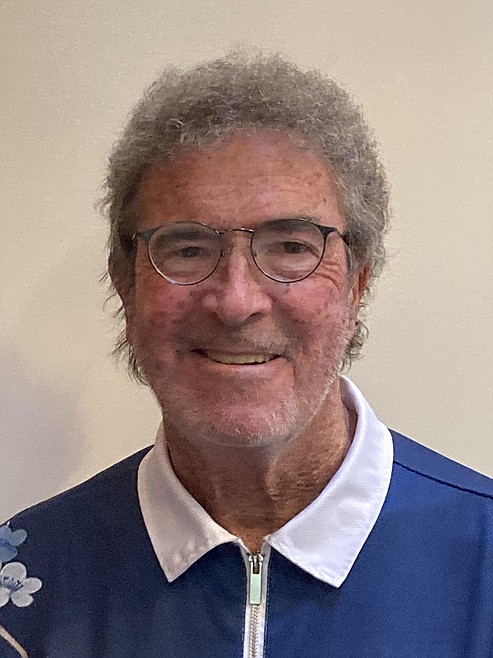THE CHEAP SEATS with STEVE CAMERON: Zags, Cougars so different, yet so similar
It’s almost eerie.
Hang on a sec and you’ll see.
OK, admittedly, Gonzaga and Washington State are coming into this week’s NCAA tournament from very different backgrounds.
The Zags have been permanent residents for a quarter-century now, while the Cougs seem like backpackers who just showed up hoping to find beds for the weekend.
Yep, that particular part of the story — basketball life since about 2000 — has played out without much in common between the two schools.
But this year’s tournament?
Honestly, once the seeds and brackets sprang out of that committee room, Gonzaga and Wazzu might as well have been the same team.
Start with the fact that there are first- and second-round West Region games scheduled at Spokane Arena.
The NCAA, which has long insisted it wants to put teams near its tourney sites whenever possible, has parachuted the 5-seed Zags into the Midwest (opening in Salt Lake City) and the 7-seed Cougs into the East (Omaha).
Meanwhile, there should be a mad rush for tickets at the 12,000-seat Spokane Arena (sarcasm), where the weekend action will feature local favorites Auburn, Yale, UAB, San Diego State, Alabama, Grand Canyon, Charleston, and (hilariously) … Saint Mary’s.
Who says the NCAA has no sense of humor?
IT’S ALSO fair to note that the Zags and Wazzu have been surprisingly similar on the court this season, as well.
Each finished second in regular-season conference play — Gonzaga in the WCC and Washington State in the dying embers of the Pac-12.
Both have shown they can take down big-time teams, however.
The Zags have been doing it for years, but this season it took them most of the season before hitting stride and going off to whip Kentucky on the road.
Major success has been a while coming for WSU, which hasn’t been in the Big Dance since 2008 — but the Cougs proved they can play with anybody by beating Pac-12 regular-season champ Arizona home and away.
The thriller in Tucson was the Wildcats’ only loss at the McKale Center this season.
There are more similarities.
The Zags and Wazzu both had to struggle with injuries that knocked their patchwork lineups out of kilter.
Mark Few got plenty of help from transfers Ryan Nembhard and Graham Ike, but the long-range shooting he’d planned from Steele Venters (who arrived from Eastern Washington) disappeared when Venters blew out his knee at the start of the year.
The Zags had enough talent and toughness to post a 25-7 record (thus winning 25 games or more for the 17th straight season), but growing pains with the defense and 3-point shooting cost them chances at huge early-season wins over Purdue, Connecticut and San Diego State.
Washington State’s Kyle Smith, meanwhile, juggled and struggled with lineups — almost the entire squad was new — and was named Pac-12 Coach of the Year for guiding the Cougs to a 24-9 record.
Smith, though, had to deal with a thin backcourt when Kansas transfer Joseph Yesufu was lost for the season after six games.
Then, power forward Andrej Jakimovski (the lone returning starter) injured his shoulder a few weeks ago and has struggled to use his shooting arm down the stretch.
THERE’S even more to connect the Zags and Cougs this season, all the way to how their regions and opponents shake out.
Both teams open against underrated teams from mid-small conferences, and would face a Big 12 monster if they win.
Gonzaga gets McNeese (30-3) to start, and a victory would earn the Zags a date with 4-seed Kansas.
The Jayhawks, national champs in 2022, have been limping lately with injuries to stars Hunter Dickinson and Kevin McCullar Jr., but both are expected to be fit for the tournament.
The Cougs, meanwhile, start with Drake (28-6) and, barring a huge upset, would face 2-seed Iowa State in the second round.
Here’s the most critical similarity between Gonzaga and Wazzu, the one that likely will determine how far they advance in the tournament.
Both have been outrageously erratic 3-point shooting teams, and it has cost them dearly.
In each case, it starts with the star point guard, the Zags’ Nembhard and WSU’s Pac-12 Freshman of the Year Myles Rice.
Nembhard took tons of 3s early in the year (he arrived with a respectable history of shooting from distance), and suddenly couldn’t hit a thing.
He’s now cut down on attempts unless in good release position, but even the late success has only pulled him up to 32 percent.
GONZAGA has had some dreadful and costly nights from deep — Purdue (0-for-16 in the second half), Santa Clara (2-for-20 in a one-point loss), UConn (2-for-10), etc.
Wazzu mirrors the long-distance problems, and just like Gonzaga, it’s cost games.
Rice is suffering through an 0-for-20 run on 3-point attempts right this minute, and teams have the luxury on not guarding him as a shooter.
The Cougs sit at a weak 34 percent on deep tries going into the tournament, and that number is a bit misleading since Jaylen Wells (43 percent) is one of the best in the country.
WSU has lot of weapons, including Jakimovski and rugged Isaac Jones in middle, plus freshman Isaiah Watts turning into a real threat — all in addition to Rice’s ability to blow to the basket.
That’s our final similarity between Gonzaga and Wazzu.
Each is good enough to beat the best teams in the country.
But they’ve gotta shoot the rock.
Email: scameron@cdapress.com
Steve Cameron’s “Cheap Seats” columns appear in The Press four times each week, normally Tuesday through Friday unless, you know, stuff happens.
Steve suggests you take his opinions in the spirit of a Jimmy Buffett song: “Breathe In, Breathe Out, Move On.”

